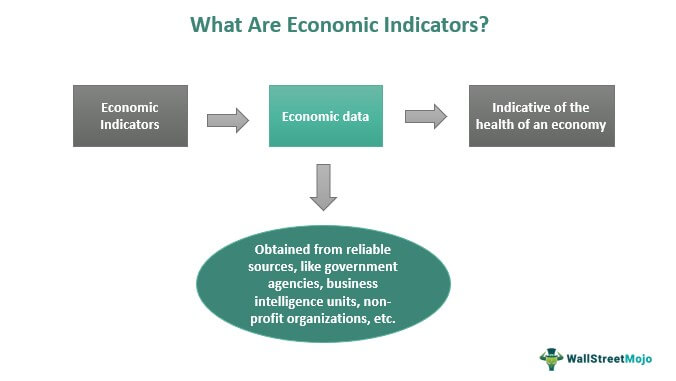
The solvency ratio is a critical financial metric used to assess the ability of an insurance company to meet its long-term obligations to policyholders. It is defined as the ratio of an insurer’s total assets to its total liabilities. This ratio provides insight into the financial health of an insurance company, indicating whether it has sufficient assets to cover its liabilities, which include claims that may arise from policyholders.
A higher solvency ratio suggests a stronger financial position, while a lower ratio may raise concerns about the insurer’s ability to fulfill its commitments. In the context of insurance, the solvency ratio is particularly significant because it reflects the company’s capacity to withstand financial stress and unexpected claims. Insurance companies operate on the principle of risk pooling, where they collect premiums from policyholders and use these funds to pay out claims.
Therefore, maintaining a robust solvency ratio is essential for ensuring that the company can honor its obligations even in adverse conditions, such as natural disasters or economic downturns. Regulators closely monitor this ratio to protect policyholders and maintain stability within the insurance market.
Key Takeaways
- Solvency ratio in insurance measures an insurer’s ability to meet its long-term financial obligations.
- It is important for insurance companies as it indicates their financial stability and ability to pay claims.
- Solvency ratio is calculated by dividing the company’s available capital by its required capital.
- A high solvency ratio indicates financial strength, while a low ratio may signal financial distress.
- The solvency ratio can impact insurance policyholders by affecting the company’s ability to pay claims and provide coverage.
Why is Solvency Ratio Important for Insurance Companies?
The solvency ratio serves as a vital indicator of an insurance company’s financial stability and operational viability. For stakeholders, including investors, regulators, and policyholders, this ratio provides a clear picture of the insurer’s ability to meet its future liabilities. A strong solvency ratio not only instills confidence among policyholders but also enhances the company’s reputation in the marketplace.
Insurers with robust solvency ratios are often viewed as more reliable and trustworthy, which can lead to increased business opportunities and customer loyalty. Moreover, the solvency ratio plays a crucial role in regulatory compliance. Insurance companies are required by law to maintain certain solvency levels to ensure they can meet their obligations.
Regulators use this metric to assess the risk exposure of insurers and to implement measures that protect consumers from potential insolvency. A company with a low solvency ratio may face increased scrutiny from regulators, which could result in restrictions on its operations or even lead to intervention measures aimed at safeguarding policyholders’ interests.
How is Solvency Ratio Calculated?

Calculating the solvency ratio involves a straightforward formula that compares an insurance company’s total assets to its total liabilities. The basic formula is: Solvency Ratio = Total Assets / Total Liabilities To derive this ratio, an insurer must first compile its balance sheet, which lists all assets and liabilities. Total assets include cash, investments, property, and any other resources that can be converted into cash or used to settle obligations.
On the other hand, total liabilities encompass all debts and obligations, including unpaid claims, reserves for future claims, and any other financial commitments. For example, if an insurance company has total assets amounting to $500 million and total liabilities of $300 million, the solvency ratio would be calculated as follows: Solvency Ratio = $500 million / $300 million = 1.67 This result indicates that for every dollar of liability, the insurer has $1.67 in assets, suggesting a healthy financial position. However, it is essential to consider industry benchmarks when interpreting this ratio, as different types of insurance companies may have varying standards for what constitutes an acceptable solvency ratio.
Interpreting Solvency Ratio: What Does it Mean?
| Company | Total Liabilities | Total Assets | Solvency Ratio | Interpretation |
|---|---|---|---|---|
| Company A | 500,000 | 1,000,000 | 0.5 | Insufficient solvency |
| Company B | 1,000,000 | 2,000,000 | 0.5 | Insufficient solvency |
| Company C | 2,000,000 | 1,000,000 | 2.0 | Healthy solvency |
Interpreting the solvency ratio requires an understanding of industry norms and the specific context of the insurance company being analyzed. Generally, a solvency ratio above 1 indicates that an insurer has more assets than liabilities, which is a positive sign of financial health. However, what constitutes a “good” solvency ratio can vary significantly across different sectors within the insurance industry.
For instance, life insurance companies typically maintain higher solvency ratios compared to property and casualty insurers due to the long-term nature of their liabilities. A solvency ratio below 1 raises red flags about an insurer’s financial stability. It suggests that the company may not have enough assets to cover its liabilities, which could lead to insolvency if not addressed promptly.
In such cases, stakeholders may demand transparency regarding the company’s risk management practices and financial strategies. Additionally, insurers with low solvency ratios may face higher capital requirements from regulators or may need to take corrective actions such as raising additional capital or restructuring their operations.
The Impact of Solvency Ratio on Insurance Policyholders
The solvency ratio has direct implications for insurance policyholders, as it serves as a measure of the insurer’s ability to pay claims when they arise. A high solvency ratio provides assurance to policyholders that their claims will be honored even in challenging circumstances. This assurance is particularly crucial for long-term policies such as life insurance or annuities, where policyholders expect their insurers to fulfill obligations over many years or even decades.
Conversely, a low solvency ratio can create anxiety among policyholders regarding the security of their policies. If an insurer is perceived as financially unstable, policyholders may seek alternatives or consider switching providers. This behavior can lead to increased competition among insurers as they strive to maintain customer trust and loyalty.
Furthermore, in extreme cases where an insurer becomes insolvent, policyholders may face delays or reductions in claim payments, leading to significant financial distress for those relying on insurance coverage for protection against unforeseen events.
Regulatory Requirements for Solvency Ratio in the Insurance Industry

Regulatory bodies around the world impose stringent requirements on insurance companies regarding their solvency ratios to ensure consumer protection and market stability. These regulations are designed to prevent insolvencies that could disrupt the financial system and harm policyholders. For instance, in the United States, state insurance regulators require insurers to maintain a minimum solvency margin based on their risk profile and business model.
In Europe, the Solvency II Directive establishes a comprehensive framework for assessing and managing risks within insurance companies. Under this directive, insurers must calculate their solvency capital requirement (SCR), which reflects the amount of capital needed to absorb potential losses over a specified time horizon. This regulatory framework emphasizes not only quantitative measures like the solvency ratio but also qualitative aspects such as governance and risk management practices.
Failure to comply with these regulatory requirements can result in severe consequences for insurers, including fines, restrictions on business operations, or even revocation of licenses. Consequently, maintaining an adequate solvency ratio is not merely a matter of financial prudence; it is a legal obligation that insurers must adhere to in order to operate within their respective jurisdictions.
Managing Solvency Ratio: Strategies for Insurance Companies
Insurance companies employ various strategies to manage their solvency ratios effectively while ensuring they remain competitive in the marketplace. One common approach is optimizing asset allocation by investing in a diversified portfolio that balances risk and return. By carefully selecting investments across different asset classes—such as equities, bonds, real estate, and alternative investments—insurers can enhance their overall returns while mitigating risks associated with market volatility.
Another strategy involves actively managing liabilities through prudent underwriting practices and effective claims management. Insurers can improve their solvency ratios by accurately assessing risks when issuing policies and ensuring that they have adequate reserves set aside for future claims. Implementing robust risk management frameworks allows insurers to identify potential vulnerabilities and take proactive measures to address them before they impact financial stability.
Additionally, insurers may consider raising capital through various means such as issuing new equity or debt instruments or pursuing strategic partnerships and mergers with other firms. These actions can bolster their balance sheets and improve their solvency ratios while also providing opportunities for growth and expansion in new markets.
The Future of Solvency Ratio in the Insurance Industry
As the insurance industry continues to evolve in response to changing market dynamics and emerging risks, the concept of solvency ratios will likely undergo significant transformations. The increasing complexity of risks—such as those posed by climate change, cyber threats, and pandemics—will necessitate more sophisticated approaches to measuring and managing solvency. Insurers may need to adopt advanced modeling techniques that incorporate scenario analysis and stress testing to better understand their exposure to potential shocks.
Furthermore, technological advancements are expected to play a pivotal role in enhancing transparency and efficiency in solvency assessments. The integration of big data analytics and artificial intelligence can provide insurers with deeper insights into their risk profiles and help them make informed decisions regarding capital allocation and risk management strategies. Regulatory frameworks will also continue to evolve in response to these changes.
Policymakers may introduce new guidelines that reflect the realities of modern insurance operations while ensuring consumer protection remains paramount. As such, insurers will need to stay agile and adaptable in their approach to managing solvency ratios while navigating an increasingly complex regulatory landscape. In conclusion, the solvency ratio remains a cornerstone metric for evaluating the financial health of insurance companies.
Its importance extends beyond mere compliance; it serves as a critical indicator of an insurer’s ability to fulfill its obligations to policyholders while navigating an ever-changing risk environment. As both market conditions and regulatory expectations evolve, so too will the strategies employed by insurers to maintain robust solvency ratios that inspire confidence among stakeholders.
FAQs
What is a solvency ratio in insurance?
A solvency ratio in insurance is a measure of an insurance company’s ability to meet its financial obligations. It compares the company’s capital and assets to its liabilities, providing an indication of the company’s financial strength and ability to withstand potential losses.
Why is the solvency ratio important in insurance?
The solvency ratio is important in insurance because it helps regulators, investors, and policyholders assess the financial stability and security of an insurance company. It provides insight into the company’s ability to pay claims and meet its long-term obligations.
How is the solvency ratio calculated in insurance?
The solvency ratio in insurance is typically calculated by dividing the company’s available capital by its required capital. Available capital includes the company’s assets, while required capital is determined by regulatory requirements and the company’s risk profile.
What is a healthy solvency ratio for an insurance company?
A healthy solvency ratio for an insurance company is typically considered to be above 100%. This indicates that the company has more than enough capital to cover its liabilities and is financially stable.
What are the implications of a low solvency ratio for an insurance company?
A low solvency ratio for an insurance company can indicate financial instability and potential risk of insolvency. It may lead to regulatory intervention, loss of investor confidence, and challenges in meeting policyholder claims.










